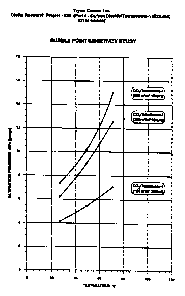Some of the information on this Web page has been provided by external sources. The Government of Canada is not responsible for the accuracy, reliability or currency of the information supplied by external sources. Users wishing to rely upon this information should consult directly with the source of the information. Content provided by external sources is not subject to official languages, privacy and accessibility requirements.
Any discrepancies in the text and image of the Claims and Abstract are due to differing posting times. Text of the Claims and Abstract are posted:
| (12) Patent: | (11) CA 2141112 |
|---|---|
| (54) English Title: | OLEFIN BASED FRAC FLUID |
| (54) French Title: | LIQUIDES DE FRACTURATION A BASE D'OLEFINES |
| Status: | Expired and beyond the Period of Reversal |
| (51) International Patent Classification (IPC): |
|
|---|---|
| (72) Inventors : |
|
| (73) Owners : |
|
| (71) Applicants : |
|
| (74) Agent: | LAMBERT INTELLECTUAL PROPERTY LAW |
| (74) Associate agent: | |
| (45) Issued: | 2002-11-19 |
| (22) Filed Date: | 1995-01-25 |
| (41) Open to Public Inspection: | 1996-07-26 |
| Examination requested: | 1999-03-10 |
| Availability of licence: | N/A |
| Dedicated to the Public: | N/A |
| (25) Language of filing: | English |
| Patent Cooperation Treaty (PCT): | No |
|---|
| (30) Application Priority Data: | None |
|---|
Linear olefin monomers, and particularly
alpha-olefins, having a pour point greater than -102°,
a flash point greater than 10° and a boiling point
greater than 121° are proposed as frac fluids in
treatment of oil and gas wells by fracturing. Linear
olefin monomers are injected into the well, and
fracturing pressures applied to the well to fracture
the well. Linear olefin monomers may be mixed with a
liquified drive fluid such as CO2, preferably with the
CO2 forming a miscible bank ahead of the linear olefin
monomers for use in driving the load fluid from the
well.
Note: Claims are shown in the official language in which they were submitted.
Note: Descriptions are shown in the official language in which they were submitted.

2024-08-01:As part of the Next Generation Patents (NGP) transition, the Canadian Patents Database (CPD) now contains a more detailed Event History, which replicates the Event Log of our new back-office solution.
Please note that "Inactive:" events refers to events no longer in use in our new back-office solution.
For a clearer understanding of the status of the application/patent presented on this page, the site Disclaimer , as well as the definitions for Patent , Event History , Maintenance Fee and Payment History should be consulted.
| Description | Date |
|---|---|
| Revocation of Agent Requirements Determined Compliant | 2020-04-22 |
| Appointment of Agent Requirements Determined Compliant | 2020-04-22 |
| Time Limit for Reversal Expired | 2013-01-25 |
| Letter Sent | 2012-01-25 |
| Inactive: Office letter | 2007-01-16 |
| Inactive: Corrective payment - s.78.6 Act | 2006-12-27 |
| Inactive: IPC from MCD | 2006-03-11 |
| Inactive: IPC from MCD | 2006-03-11 |
| Inactive: Office letter | 2004-05-06 |
| Letter Sent | 2004-03-10 |
| Letter Sent | 2004-03-04 |
| Grant by Issuance | 2002-11-19 |
| Inactive: Cover page published | 2002-11-18 |
| Inactive: Entity size changed | 2002-09-12 |
| Inactive: Office letter | 2002-09-04 |
| Letter Sent | 2002-09-04 |
| Inactive: Office letter | 2002-07-24 |
| Inactive: Single transfer | 2002-06-21 |
| Pre-grant | 2002-06-21 |
| Inactive: Single transfer | 2002-06-21 |
| Inactive: Final fee received | 2002-06-21 |
| Notice of Allowance is Issued | 2002-02-22 |
| Letter Sent | 2002-02-22 |
| Notice of Allowance is Issued | 2002-02-22 |
| Inactive: Approved for allowance (AFA) | 2002-02-12 |
| Letter Sent | 2001-08-09 |
| Inactive: Status info is complete as of Log entry date | 1999-03-29 |
| Letter Sent | 1999-03-29 |
| Inactive: Application prosecuted on TS as of Log entry date | 1999-03-29 |
| All Requirements for Examination Determined Compliant | 1999-03-10 |
| Request for Examination Requirements Determined Compliant | 1999-03-10 |
| Amendment Received - Voluntary Amendment | 1999-03-10 |
| Application Published (Open to Public Inspection) | 1996-07-26 |
There is no abandonment history.
The last payment was received on 2002-01-25
Note : If the full payment has not been received on or before the date indicated, a further fee may be required which may be one of the following
Please refer to the CIPO Patent Fees web page to see all current fee amounts.
Note: Records showing the ownership history in alphabetical order.
| Current Owners on Record |
|---|
| ENERCHEM INTERNATIONAL INC. |
| Past Owners on Record |
|---|
| DWIGHT N. LOREE |